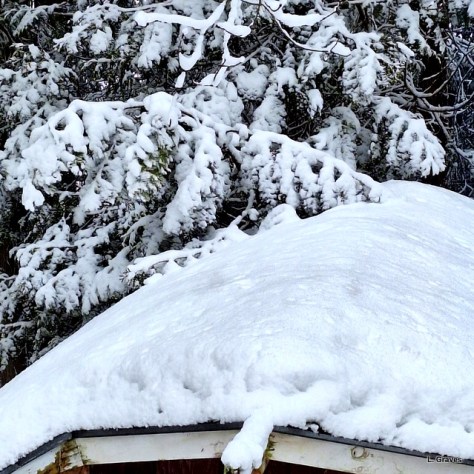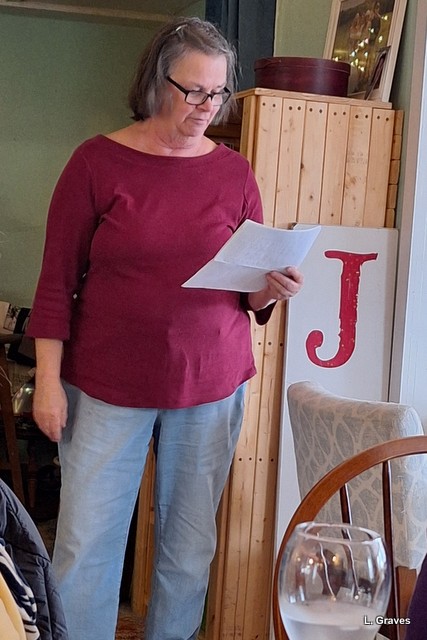Last weekend we celebrated my son-in-law Mike’s birthday. Because they live in Massachusetts, Mike, our daughter Shannon, and the dogs came to Maine on Saturday to spend the night.
The day was astonishingly warm for early February in Maine. When it comes to the weather nowadays, my thoughts always turn to my parents, who never would have imagined it could be so warm in midwinter. Such big changes.
Mike chose to go to Absolem Cider Company to celebrate his birthday. It is one of his favorite places in central Maine. It is one of mine, too.
Here we are, on the way to the barn at sunset. Note how shiny with mud the path is. It felt more like March than February.
However, inside all was cozy and dry. Soon we had our drinks, and it was cheers to the birthday boy.
Here is a picture of Mike and our daughter Shannon.
After our drinks, we went back home for presents, and this year, Clif and I had come up with something special for Mike—twelve books, one to be opened at the beginning of each month throughout the year.
I got the idea from my friend Doree, who had done this for her sister for Christmas and had written about it on Facebook. Immediately, I was smitten by the idea, and my thoughts turned to Mike and his birthday in February. Mike is an avid reader, and I knew he would be thrilled to get a book a month. Also, and this is sheer coincidence, of everyone in the family, Mike’s taste in books is most similar to mine, which made picking out books for him very easy.
Last Thursday, Clif and I wrapped and labeled the books. As we did so, I thought about how giving these gifts was a joy from beginning to end—choosing the books, deciding which books should go for which month, wrapping the books, and then seeing them laid out on our dining room table, small packages of delight waiting to be opened.
A closer look at February’s book.
And what was February’s book? Here is New York, by the late great writer E.B. White, whom I mentioned in last week’s post.
It was so much fun to watch Mike inspect his books.
“This is amazing,” he said more than once.
Happy birthday, Mike, and happy reading!














































